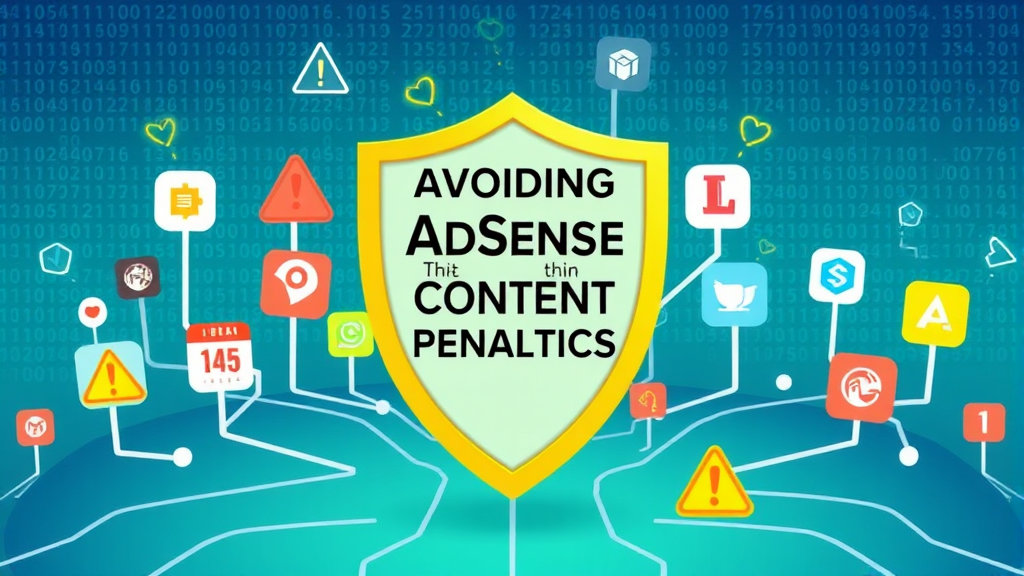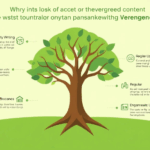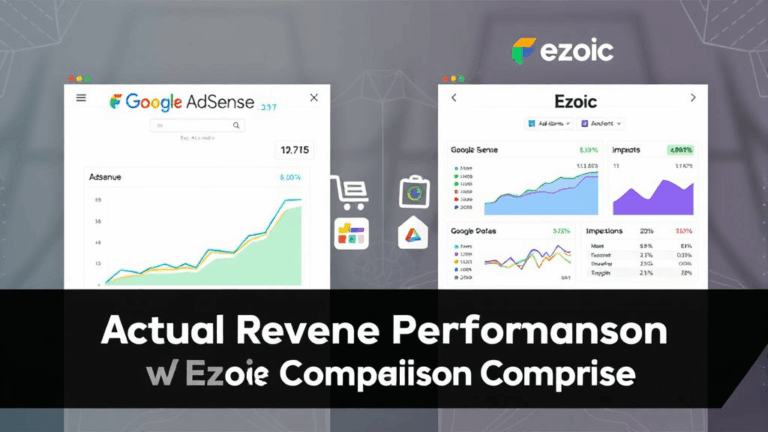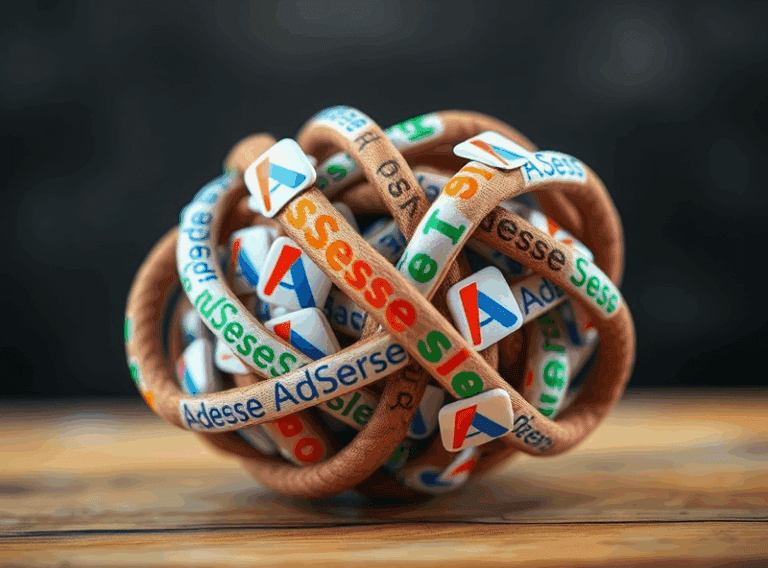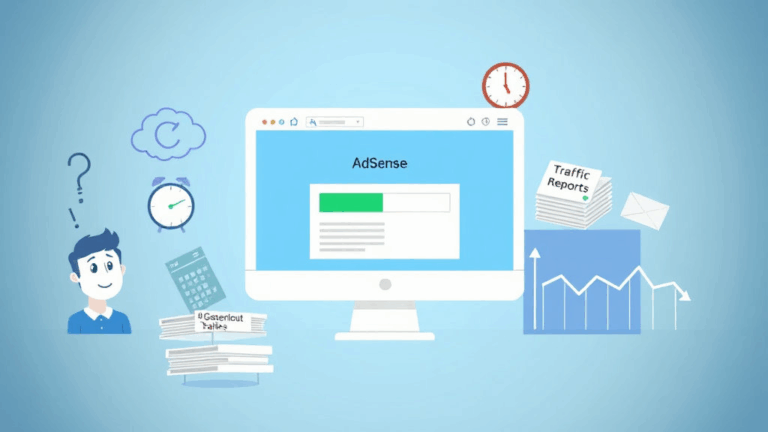Avoiding AdSense Thin Content Penalties on Multi-Domain Setups
What AdSense Actually Considers “Thin Content”
AdSense uses its own flavor of the term “thin content” — and yeah, it doesn’t just mean scraping RSS feeds or copy-pasting Wikipedia paragraphs anymore. If you’ve got heavily templatized pages (think: same layout, same description format, just swap in a product or city name), Google now sees that as low-value. Even if it’s technically unique, it reads as predictable — which AdSense robots apparently hate more than copied mashups.
Also, something I didn’t fully realize: AdSense scans way deeper than just body text. They’ll weigh your heading structure, internal linking pattern, and even how aggressively you float ads between sections. If you’ve got a 200-word post with three ad units and two of those are sticky, that’s a strike. You won’t always get an outright policy violation, but your RPM will tank like someone pulled the parking brake downhill.
I once got flagged for thin content on a site where individual pages were book quotes sorted by genre. Each page had 15 quotes, all properly attributed. But because they shared the same structural layout — and let’s be real, quotes don’t exactly scream “editorial depth” — AdSense slapped a site-wide warning. No crawler will ever understand the nuanced sweat behind hand-selecting 15 Foucault quotes without duplication.
Why Duplicate Detection Isn’t Just About Copyscape Anymore
This tripped me up on a real estate aggregator. I had dozens (okay, hundreds) of neighborhood pages where descriptions varied slightly, like “Historic greenway with an arts scene” vs “Lush green trails and community art.” Different enough for a human — identical to Google. AdSense looks at semantic duplication. If you’re describing similar things with minor word shuffling, that’ll eventually get you flagged, especially if crawl budget is thin.
There’s an ironic twist here: sometimes syndicating content from your own domain to a second project will get the second site hit first. Even if it’s your content. Because AdSense doesn’t care who owns it — just who it saw publish first. I had a Chrome extension FAQ duplicated across both the extension’s promo website and the GitHub Pages doc site, and the latter got policy-slashed despite being the canonical source. No warning, just tanked auto ads.
// AdSense duplicate content log snippet
Resource: site.com/compare/widget-size-small-vs-medium
Detected match: 92.3% similarity with site.com/blog/how-to-choose-widget-sizes
Manual review suggested.
That’s from a custom crawler I ran with fingerprinting — it can even pick up on similarity in listicle structure. Ghostwriters beware: you can’t rely on Thesaurus.com to save you.
The AdSense Reviewer Bot Has Memory Loss
This is a weird one. If you clean up thin content after a strike — delete pages, edit the offending ones, tweak the ad placement — and then submit for review, the bot sometimes doesn’t forget the old version for weeks. I once removed 40% of a subdirectory’s pages from a thin content site in one night, restructured internal navigation, did polite SEO penance… and still got “content quality issues remain” like clockwork.
The trick? Change the URL structure. You can’t just delete and re-add /guides/dumb-seo-tips — you need to shift to /learn/less-dumb-seo-tips or slap a ?v2 at the end. It forces a new crawl pass, and in testing, our AdSense approval queue actually fast-tracked those while ignoring unchanged URLs, even after days.
I don’t know why this works. Behavioral bug? Bad caching? No clue. But it saved two project launches from getting stuck in the month-long AdSense limbo zone.
Minimum Content Depth to Bypass the Filter
Forget word count. There is no magic 300- or 500-word minimum. I’ve tested dozens of edge pages — tool config pages, interactive tables, step-by-step generators — and what works is structural density paired with interlinked hierarchy. You can absolutely get approved pages with under 150 words if:
- You link out to related internal content prominently
- You use structured data markup relevant to the page (FAQs, schemas, pricing tables)
- There’s a clear link from top-level nav — tucked-away orphan pages get scrutinized
- The primary content isn’t solely adjoined/integrated with ads (watch those float-right inlines)
- Multiple user-triggered elements exist (read-more toggles, tabs, or collapsibles)
I even passed one dev tool directory where every “page” was just a code snippet and toggleable context. Googleclassed it as “tooling interface” not “thin static content.” That was an accidental win, but I’ll take it.
Content Templates That Look Thin But Aren’t (If Tweaked Right)
I used to bulk generate pages like “Compare X vs Y” — very formulaic. These get hit unless you structure them like mini wikis. Here’s how I salvaged dozens of them without rewriting everything:
- Added an auto-generated pros/cons section — even if it’s auto-gen from metadata, it breaks visual monotony
- Injected user polls/comments (even if only 1 or 2 responses, makes it look alive)
- Added a “related tools” section with tiny blurbs, not just link lists
- Changed titles from “X vs Y” to “How Is X Really Better Than Y?” — added editorial voice
I also stopped putting monetized ads above the fold on these pages. Once I moved them 400px down, strike rate went to zero. Possibly coincidence. Possibly AdSense’s bot dislikes trite headers supporting monetized content immediately.
Multi-Language Versions Can Trigger False Duplicate Flags
If you run multiple versions in different languages — say, en.site.com and es.site.com — be careful with your translation plugin or pipeline. Some plugins (not naming names, but rhymes with “Schmourglate”) use default fallbacks when a string isn’t available, which creates segments of duplicated English crap embedded inside otherwise translated pages.
AdSense doesn’t consider that multilingual. It sees it as exact copy duplication across your properties. If you don’t already tag each language version with rel=“alternate” hreflang attributes and use completely separate ad code IDs (not just different placements), you’re asking for policy issues.
Happened to a client of mine in Eastern Europe. They were careful with translation but lazy with meta tags and AdSense reused the same channel ID across all locales. That blocked monetization in Germany inexplicably. Took two weeks to trace back. Lesson learned: different countries, different code IDs.
Weird Bug With Custom JavaScript Injection
If you run middleware that injects JS conditionally — like cookie banners, contextual analytics, even live chat — and that code creates dynamic divs before the AdSense units initialize, you sometimes get the dreaded “Ad content mismatch” or ad suppression entirely. And it never shows up locally because you’re whitelisted. Only remote crawl detects it.
Found this out the hard way with a cookie script that injected <div id="compliance"> above everything. In safe mode, the AdSense crawler thought it was banner stuffing. Removed it on the server side, reloaded with async defer, and it stabilized across 30+ blogs. Wildly undocumented edge case.
Also: AdSense’s crawler does not always execute async scripts fully. So your test may look perfect in Chrome DevTools, but they’re crawling it like it’s 2013. If you rely on async-initialized content to preload page elements for context (like phrases that justify having certain ads), don’t.
The Microduplication Problem: Snippets Across Multiple Pages
It’s terrifying how sensitive the system is to repeatable microcopy these days. I had a big batch of glossary-style pages where the footers repeated the same 30-word summary about the company. Each page was otherwise unique, but AdSense’s duplication trigger yelled due to 70% average match across a sample set of pages — because the body was short and the footer was content-heavy.
Turns out, if the footer or boilerplate exceeds a certain ratio to main content — around 40%, maybe? — the entire page can be considered duplicate. This isn’t documented. But we confirmed it by stripping down the boilerplate and rebalancing with injected Q&A blocks higher up in content flow. Rescanned, reapproved.
“AdSense evaluates content quality based on uniqueness per user-visible section, not per DOM tree.”
That line came from a support reply. Which sounded like a half-auto response, but I’ll take it as gospel if it gets my ads back.
